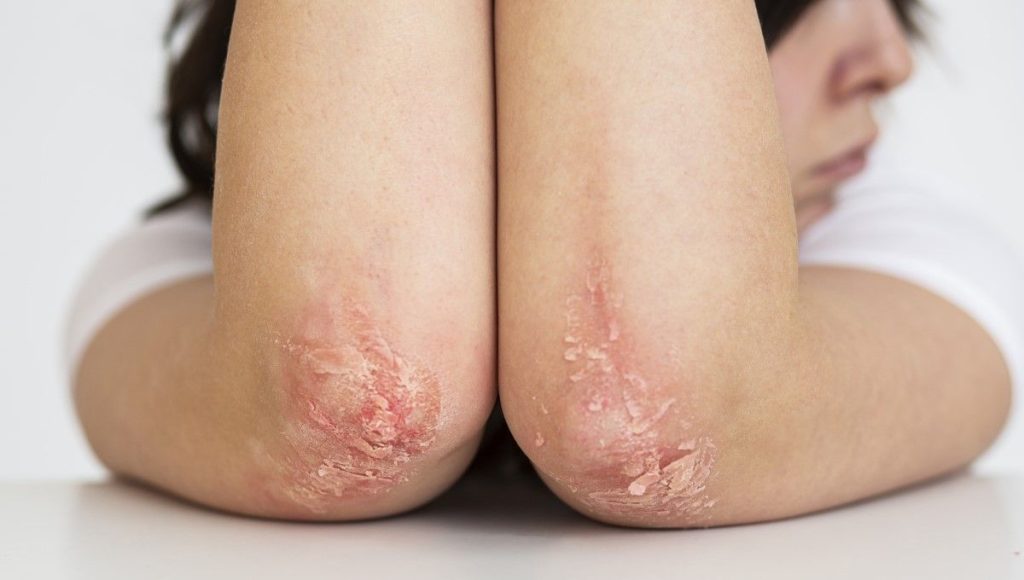Eczema Relief: Understanding How UVB Therapy Can Help Alleviate the Itching and Inflammation Associated with Eczema
Eczema, also known as atopic dermatitis, is a chronic inflammatory skin condition characterized by symptoms like dryness, redness, itching, and blistering.
It affects millions worldwide and can significantly impact a person’s quality of life. The quest for effective treatment options continues to be a major focus for dermatologists and researchers. One promising approach is ultraviolet B (UVB) therapy, which has gained attention for its potential in alleviating the difficult symptoms of eczema.
UVB therapy involves exposure to a specific wavelength of ultraviolet light, ranging from 280 to 320 nanometers. This therapy is delivered using special lamps and is typically administered in a controlled clinical environment. The primary aim is to reduce skin inflammation and alleviate the discomfort associated with eczema lesions.
UVB therapy has been shown to slow the rapid growth of skin cells, a characteristic feature of eczema, thereby decreasing the thickening of the skin and excessive shedding.
Benefits of UVB therapy
One of the foremost benefits of UVB therapy is its immunomodulatory effects. Eczema is often exacerbated by the immune system’s overactive response, which leads to inflammation and symptom severity. UVB light can temper this immune response by reducing the activity of T-cells, which play a critical role in the inflammation process. As the inflammation subsides, patients typically experience a reduction in itching and redness, key symptoms that contribute to the distress experienced by those with eczema.
The administration of UVB therapy is often personalized, with treatment frequency and duration tailored to the individual’s skin type and the severity of their eczema. A typical treatment course might involve sessions two to three times per week, with gradual increases in the light dose. Dermatologists carefully monitor patient response to optimize treatments and mitigate any adverse effects, such as mild tanning or sunburn-like reactions, infrequent though they may be.
While UVB therapy offers notable relief for many eczema patients, it is typically part of a comprehensive treatment plan. For optimal results, it is often used alongside topical treatments such as emollients and corticosteroids. This multimodal approach helps address different aspects of the condition, offering synergistic benefits and improving overall skin health.
Despite the therapeutic advantages, UVB therapy for eczema is not suitable for everyone. Certain patients may have contraindications due to their skin type, history of skin cancer, or other medical conditions. As with any medical treatment, a thorough evaluation by a healthcare provider is essential to determine candidacy for UVB therapy. Patients should also be aware that the treatment requires a time commitment, which might be a consideration based on their lifestyle or work schedule.
Long-term impacts of UVB therapy for eczema management
Recent studies continue to explore the efficacy and long-term impacts of UVB therapy for eczema management. Research is ongoing to determine optimal dosing regimens and to explore advancements in delivery systems, such as home-based phototherapy units, which could extend access to those unable to visit treatment centers regularly. The development of more advanced technologies aims to enhance precision and personalization of UVB therapy, maximizing benefits while reducing potential side effects.
In addition to physical relief, UVB therapy can have a positive psychological impact on individuals with eczema. The visible improvement in skin health and subsequent reduction in symptoms can enhance self-esteem and reduce stress, factors known to exacerbate eczema. By addressing these psychological burdens, UVB therapy not only improves physical well-being but also holistic quality of life.
However, patient education remains a critical component of successful UVB therapy. Understanding the treatment process, potential outcomes, and the importance of adherence to scheduled sessions helps set realistic expectations and improve compliance. Educators and healthcare providers must ensure that patients comprehend the necessity of protective measures, such as wearing goggles during treatment to shield the eyes from UV exposure.
UVB Therapy: Eczema Management
Integration of UVB therapy into eczema management represents a valuable option for those struggling with persistent, severe symptoms unresponsive to other treatments. Its role in future dermatological practice will likely expand as we gain further insights into its mechanism of action and develop innovative approaches to enhance its accessibility and effectiveness.
Eczema continues to challenge patients and healthcare providers alike, but the emergence of UVB therapy heralds a promising advance in treatment options. As research unfolds and therapeutic strategies evolve, the potential to provide lasting relief from eczema’s debilitating symptoms becomes increasingly attainable. With continued innovation and application, UVB therapy may illuminate a path toward improved quality of life for those living with eczema, bridging a gap in therapeutic care with the healing power of light.

Silvia Malgot is a renowned author and expert in the fields of skincare and beauty, with over a decade of experience researching and writing about effective treatments, holistic approaches, and innovative technologies. Her passion for empowering individuals to feel confident in their own skin has driven her to explore cutting-edge solutions and timeless traditions in skincare.
Silvia has contributed to several leading health and beauty publications, providing insights into trends, product recommendations, and practical advice grounded in science. Her approachable yet detail-oriented style has made her a trusted voice for readers seeking clarity in an overwhelming industry. When she’s not writing, Silvia actively participates in workshops and seminars, sharing her knowledge and inspiring others to prioritize self-care through sustainable, informed practices.


